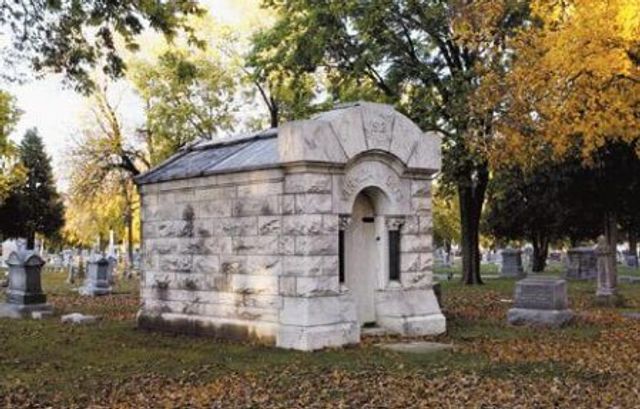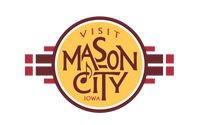Tour the Elmwood-St. Joseph Cemetery

TOUR THE ELMWOOD-ST. JOSEPH CEMETERY
Take a trip through Mason City’s rich history as you learn more about the historical figures who led Mason City to where it is today. The Elmwood-St. Joseph Cemetery is a scenic and serene setting for visitors looking to learn about the community’s past. With an impressive collection of elaborate grave markers and monuments and very distinct, free-standing walk-in mausoleums, the Elmwood-St. Joseph Cemetery is a Historic District on the National Register of Historic Places.

This park-like cemetery is home to 70 acres of beautiful grounds that now serve as the final resting place for thousands of loved ones and many local historical figures, including musical icon Meredith Willson. Author and composer of “The Music Man,” Willson was a native of Mason City. “River City,” the fictitious city in “The Music Man,” was a tribute to Willson’s hometown and resembled many people and places within Mason City. This famous musical became one of the five longest-running musical plays in Broadway history and won several prestigious awards. Willson rests in the family lot in the Greenwood section of the cemetery. His mother, Rosalie, brother Cedric, sister Dixie, and former wife Rini are all laid to rest beside him.
Built in 1915, the historic Melson Mausoleum is a must-see in the cemetery. Built by Joshua Melson for his wife Minnie, this large granite structure resembles the Melson House, which can be seen on the Historic Architectural Walking Tour. Minnie, a popular school teacher, was laid to rest under the marble floor inside the mausoleum. Rumor has it that Joshua would sit inside the mausoleum every night in his rocking chair and read Minnie a book. Joshua and his second wife, Julia, are laid to rest outside of the mausoleum.
In 1910, attorneys James E. Markley and James Blythe hired Frank Lloyd Wright to design a new building for their firm, incorporating a new hotel and bank. Wright designed the bank building with the idea that it was a strong box on a large scale with offices overhead, known as City National Bank. Today, the building is known as the Historic Park Inn Hotel, the only remaining Frank Lloyd Wright-designed hotel in the world. The Blythe home, designed by Walter Burley Griffin in 1913, was the first Prairie School house making a Meso-American (Maya) influence. The Markley home, built in 1901 by James Moore, was bought by Markley in 1908. Both homes can be seen on the Historic Architectural Walking Tour. Markley and Blythe are both laid to rest in Elmwood-St. Joseph Cemetery.
Built between 1908 and 1915, the cemetery’s mausoleums reflect the Classical, Romanesque, and Prairie School architectural styles, with one designed by well-known Prairie School/Wrightian architect Barry Byrne. Many City Founders, as well as Veterans from the Civil War to the Iraq War, are laid to rest within the Elmwood-St. Joseph Cemetery.

The Vermilya and Dilts mausoleum at Elmwood-St. Joseph Cemetery in Mason City is one of North Iowa’s most ornate. (Globe Gazette photo by Jeff Heinz)
Historical Guide Maps are available at the Mason City Visitor Center (located at 2021 4th Street SW). Guided tours introduce visitors to the many fascinating stories and historic highlights within the cemetery. Schedule your tour today and learn more about the rich history in Mason City, Iowa. >>LEARN MORE








